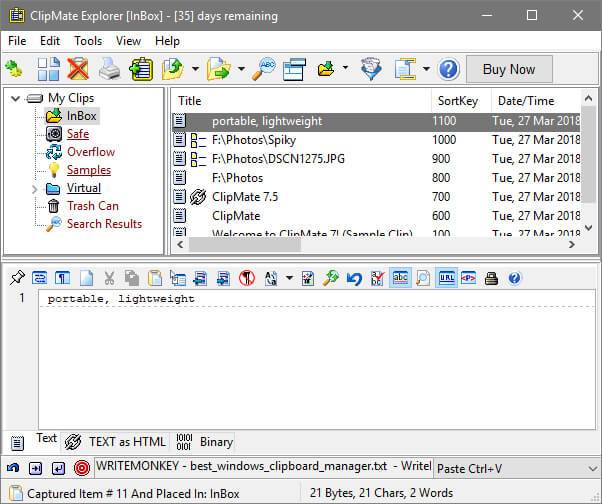
By contrast, if you use paste from the quoteplus register (e.g.
#MAC CLIPBOARD MANAGER VIM CODE#
When combined with the indentation already present in the code snippet, the result is that each line drifts farther and farther to the right. If the autoindent feature is enabled, the Vim automatically adds spaces at the start of each line. Vim receives a stream of characters and interprets them just as though they were typed manually.

If your clipboard contains a multi-line range of text, then the ctrl-v command can produce strange results in Insert mode. Using ctrl-v in Insert mode can produce strange artefacts, and for large sections of text it’s also noticably slower than pasting from the quoteplus register. The "+p command produces better results than ctrl-v

Normal mode put command pastes system clipboard after cursorĮx command puts contents of system clipboard on a new line If you want to paste text from the system clipboard into your Vim buffer, you could use any of these commands: command For example, if you want to yank text from a Vim buffer into the system clipboard, you could use any of these commands: commandĬopy the selected text into the system clipboardĬopy the text specified by into the system clipboard The "+ register can be used much like any other register.

So long as your version of Vim has been compiled with support for the +clipboard feature, then you can use the "+ register to access your system clipboard. Vim uses CLIPBOARD when reading and writing the “+ register. This is an abridged quote from Vim’s documentation (see :h quoteplus):ĬLIPBOARD is expected to be used for cut, copy and paste operations.


 0 kommentar(er)
0 kommentar(er)
